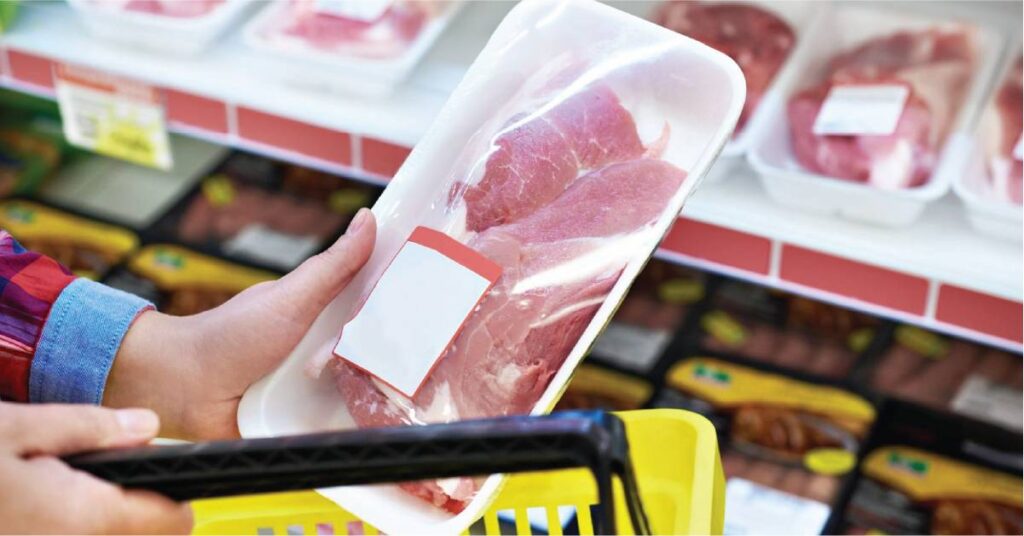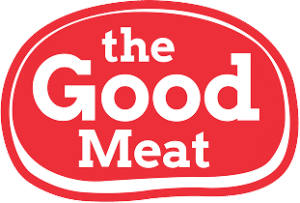
The Ultimate Guide to Buying and Storing Meat
Meat is a delicious and versatile ingredient that can be used in countless dishes. However, buying and storing meat can be a daunting task, especially with so many different types of meat and cuts available. In this guide, we’ll cover everything you need to know to buy and store meat like a pro.

Buying Meat
When it comes to buying meat, whether it is fresh or frozen, here’s how to tell if meat is fresh and a few key things to keep in mind:
Quality
The quality of the meat you buy is important for both flavor and safety.
✔ Look for meat that is bright in color and has minimal blemishes or discoloration.
✔ The meat should also have a fresh smell. If it smells sour or rancid, it may be spoiled.
When it comes to beef, marbling (thin strips of fat throughout the meat) is considered a good thing. It adds flavor and helps keep the meat tender during cooking. On the other hand, too much fat can make the meat greasy and unappetizing.
For poultry, look for meat that is plump and free from bruises or discoloration. The skin should be smooth and unbroken.
Cut
Different cuts of meat are suitable for different dishes. When buying meat from a meat supplier, consider what you plan to use it for and choose the appropriate cut.
Different cuts of meat are suitable for different cooking methods. For example, tougher cuts like chuck or brisket are best for slow cooking, while leaner cuts like tenderloin or sirloin are better for grilling or pan-frying.
When buying beef, consider the following cuts:
- Chuck: This cut comes from the shoulder of the cow and is tough but flavorful. It’s great for slow cooking dishes like stews, pot roasts, and chili.
- Brisket: This cut comes from the breast of the cow and is also tough but flavorful. It’s great for smoking and braising.
- Ribeye: This cut comes from the rib section of the cow and is tender and flavorful. It’s great for grilling or pan-frying.
- Tenderloin: This cut comes from the loin area of the cow and is the most tender cut of beef. It’s great for roasting or grilling.
When buying poultry, consider the following cuts:
- Breast: This is the leanest part of the chicken and is great for grilling, sauteing, or baking.
- Thigh: This is the juiciest part of the chicken and is great for roasting or braising.
- Drumstick: This is the lower part of the leg and is great for frying or grilling.
Quantity
Buy only the amount of meat you need. This will help you avoid waste and save money. If you need to buy meat in bulk, consider buying from a frozen meat supplier like The Good Meat, who offers high-quality frozen meat products at competitive prices.
Storing Meat
Storing meat properly is crucial to prevent spoilage and food-borne illnesses. Here’s what you need to know to keep the freshness of your meat;
- Store meat in the refrigerator as soon as possible after purchase.
- Wrap all meat tightly to prevent cross-contamination with other foods, or to limit the chances of bacteria growth in the meat.
- Use separate cutting boards when handling raw meats and cooked meats.
Temperature
Raw meat should always be stored at a temperature below 40°F (4°C) to slow bacterial growth and preserve freshness. For home refrigerators, store meat on the bottom shelf where it’s coldest and separate from other foods.
If you’re transporting meat, make sure it stays cold by using a cooler or insulated bag with ice packs.
Packaging
Meat should be stored in its original packaging or wrapped tightly in plastic wrap or aluminum foil. This will help prevent air from getting in and keep the meat fresh. At The Good Meat, we take extra care to ensure that our meat products are packaged properly to maintain their quality.
Freezing
If you don’t plan to cook meat within a few days of purchase, freeze it immediately. Freezing meat at home can extend its shelf life by several months.
To freeze meat, wrap it tightly in freezer-safe packaging and label it with the date. If you have a vacuum sealer, this is an even better way to package meat for freezing. Make sure to remove as much air as possible before sealing.
Keep in mind that meat can last up to one year in the freezer but may lose quality over time. If you’re unsure about the quality of frozen meat, check for signs of freezer burn (white or gray patches on the surface of the meat).
Defrosting
When defrosting meat, do so in the refrigerator or microwave. Never defrost meat at room temperature, as this can promote bacterial growth.
General Foods Safety Tips
Before you proceed with properly storing your meat products, make sure that all the containers and kitchen utensils that you will use for preparation are sanitized and clean. You cannot compromise your health.
To prevent the spread of harmful bacteria, it’s important to replace kitchen essentials like towels and sponges regularly. Using dirty sponges and towels to wash dishes and cutting boards can actually cause the bacteria to multiply.
Additionally, sponges and towels are breeding grounds for disease-causing pathogens, which is why it’s important to clean your sponge thoroughly every other day and replace it at least once a week.
End note
Buying and storing meat doesn’t have to be complicated. By following these simple tips, you can ensure that your meat stays fresh and safe to eat. And if you’re looking for a reliable meat supplier that offers high-quality fresh and frozen meat products, look no further.
Visit The Good Meat’s online meat shop to explore premium quality meat.

